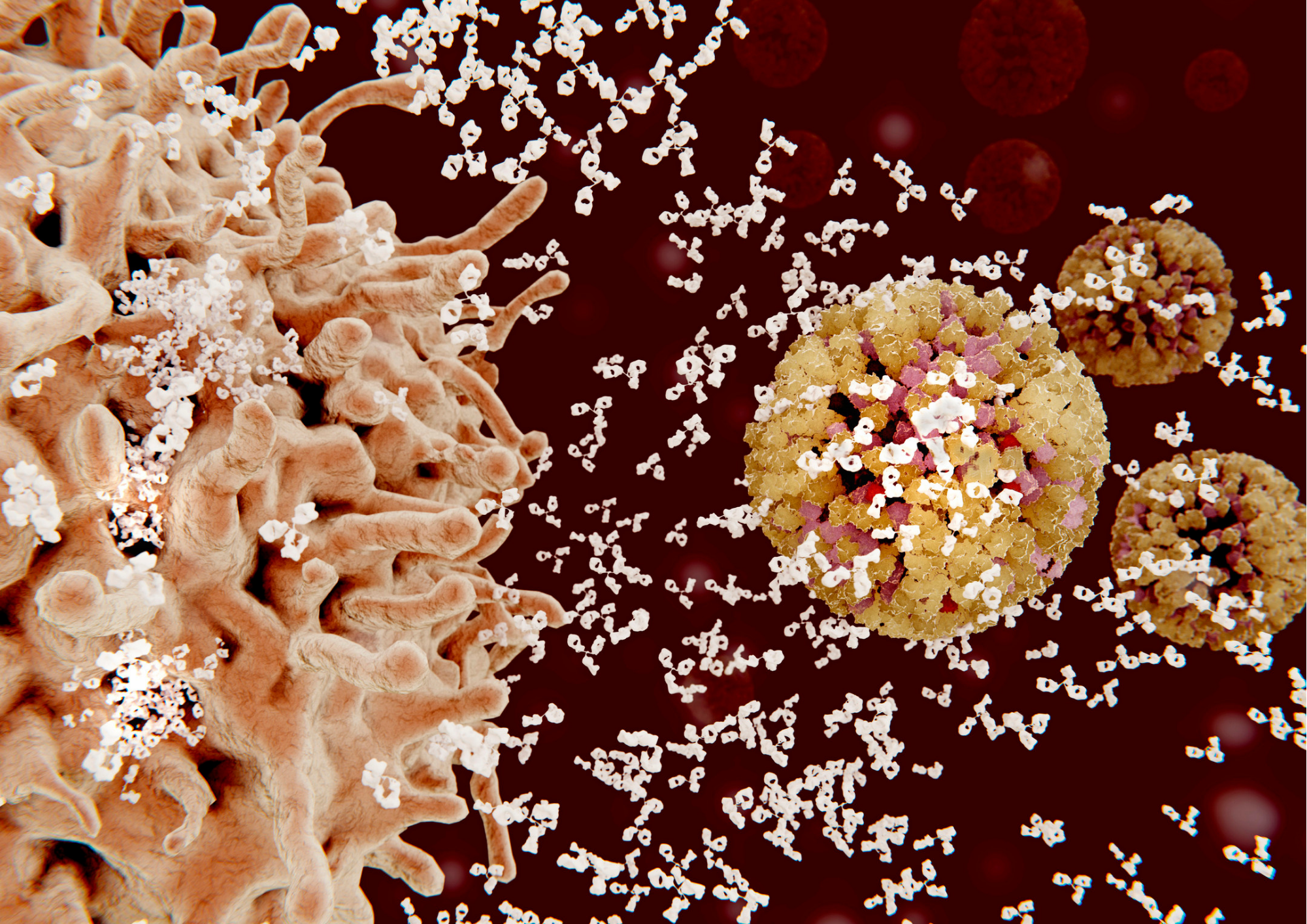ELISA / Assay Kits (Immunology)
Our immune system constitutes a complex network that recognizes pathogens, cancer cells, and the like as "non-self," and eliminates them. Abnormality in the immune system may cause autoimmune diseases or allergies. Inflammation is a type of immune response and is associated with redness, swelling, fever, pain, etc. Usually, following inflammation, the healing process begins. However, if inflammation is not cured for any reason and becomes chronic, significant impact on our health will be observed. Fujifilm Wako offers assay kits useful for immunology.
More Information

Our body has an immune system to distinguish aspects of the body’s “self” from “non-self,” and eliminate non-self objects as foreign substances. The immune system can prevent infection of many viruses, bacteria, molds, and parasites existing in the outside world, and can suppress proliferation of cancer cells generated in the body. Vaccination with an attenuated pathogen or a part of pathogen can induce immune response to prevent diseases.
Immune System and Cytokines
Cytokines, proteins that are produced by cells and mediate cell-cell interactions, are important molecules that play roles in the regulation of immune and inflammatory responses. A cytokine that induces migration of specific white blood cells is called a chemokine. A list of representative cytokines and their functions is provided below (Table 1).
Table 1.Cytokines and Their Functions
| Cytokine | Functions |
|---|---|
| IFN-γ | IFN-γ is mainly secreted by T cells and NK cells and has biological activities such as antiviral effect, cell proliferation suppression effect, antitumor effect, macrophage activation, NK cell activity enhancement, immune response regulation, and regulation of differentiation induction. |
| IL-6 | IL-6 was discovered as a cytokine responsible for the differentiation of B cells into antibody-producing cells. It is involved in various physiological functions such as immune response, inflammatory reaction, hemopoiesis, and proliferation and differentiation of nervous system cells. |
| IL-7 | IL-7 is a cytokine that induces differentiation of stem cells into immune system cells. It promotes proliferation, development, and antiviral activity of both CD4+ and CD8+ cells. It is related to the development of rheumatoid arthritis and chronic colitis, and asthma mediated by eosinophil activity. It is considered a booster factor in combination therapy of anticancer drugs and immune checkpoint-related drugs. |
| IL-8 (CXCL8) | IL-8 (CXCL8) is known as a neutrophil chemotactic factor (chemokine) and induces chemotaxis of target cells to the site of infection. It functions as an important mediator of inflammation process in organisms by inducing phagocytosis. |
| IL-12 | IL-12 is known as a natural killer cell stimulation factor (NKSF) or a cytotoxic lymphocyte maturation factor (CLMF). It is mainly produced by macrophages and B cells and cause autoimmune diseases or start immune responses against microbial and viral infections and cancers by inducing production of IFN-γ and differentiation of type 1 helper T cells (Th1) that are involved in cell-mediated immunity. |
| IL-17 | IL-17 is mainly produced by activated T cells and acts on a variety of cells such as fibroblasts, epithelial cells, vascular endothelial cells, and macrophages to induce inflammation. |
| TNF-α | TNF-α is produced by various cells such as activated macrophages, B cells, T cells, and fibroblasts. It induces apoptosis, increases antibody production, and is involved in infection prevention and antitumor activity. It is secreted also by enlarged adipocytes and has attracted attention in carbohydrate metabolism-related fields as a factor that increases insulin resistance. |
| VEGF | A VEGF family is a group of cytokines that play important role in angiogenesis. VEGF-A165 is the most common subtype, and shows high efficiency in tumor angiogenesis induction. It is reported to be related to diseases such as rheumatoid arthritis, arteriosclerosis, retinal disease, and POEMS syndrome. |
What Are Targets of Autoimmune Disease?
Autoimmune diseases are classified according to which organ is recognized as non-self and attacked. Autoimmune responses to the pancreas, for example, can cause type 1 diabetes, and autoimmune responses to the central nervous system can cause multiple sclerosis.
In some cases, something existing in most cells, such as DNA, can be a target. A representative example is systemic lupus erythematosus (SLE). Autoantibodies detected in the serum of MRL/lpr mouse, which is an autoimmune disease model, include IgG-type rheumatoid factors (RF), IgM-type RF, anti-ssDNA antibodies, anti-dsDNA antibodies, and anti-Sm antibodies.

Molecular Mechanism of Allergy
An antigen that causes allergy is called an allergen. Representative allergens in Japan include Japanese cedar pollen allergen Cry j1 and mite (Dermatophagoides farinae) allergen Der fII. After entering the body, allergens are taken up by dendritic cells, and antigen-specific IgE antibodies are produced. When the IgE antibodies bind to IgE receptors on mast cells or basophils and the antibodies catch the allergens, histamine is secreted and causes runny nose and sneezing.
Aside from the above mechanisms, atopic dermatitis and asthma are considered to be caused by chronic inflammation due to helper T cells (Th2), and breakdown of the skin barrier function has also been found to be involved in the development of allergy.
References
- “Biochemical dictionary 4th ed.” ed. by Oshima, T. et al., Tokyo Kagaku Dojin, Japan, (2007). (Japanese)
- Nakao, A.: “Expectations and Excitement for Overcoming Allergies”, Yodosha, Japan, vol.34, p.2968(2016). (Japanese)
For research use or further manufacturing use only. Not for use in diagnostic procedures.
Product content may differ from the actual image due to minor specification changes etc.
If the revision of product standards and packaging standards has been made, there is a case where the actual product specifications and images are different.
The prices are list prices in Japan.Please contact your local distributor for your retail price in your region.




